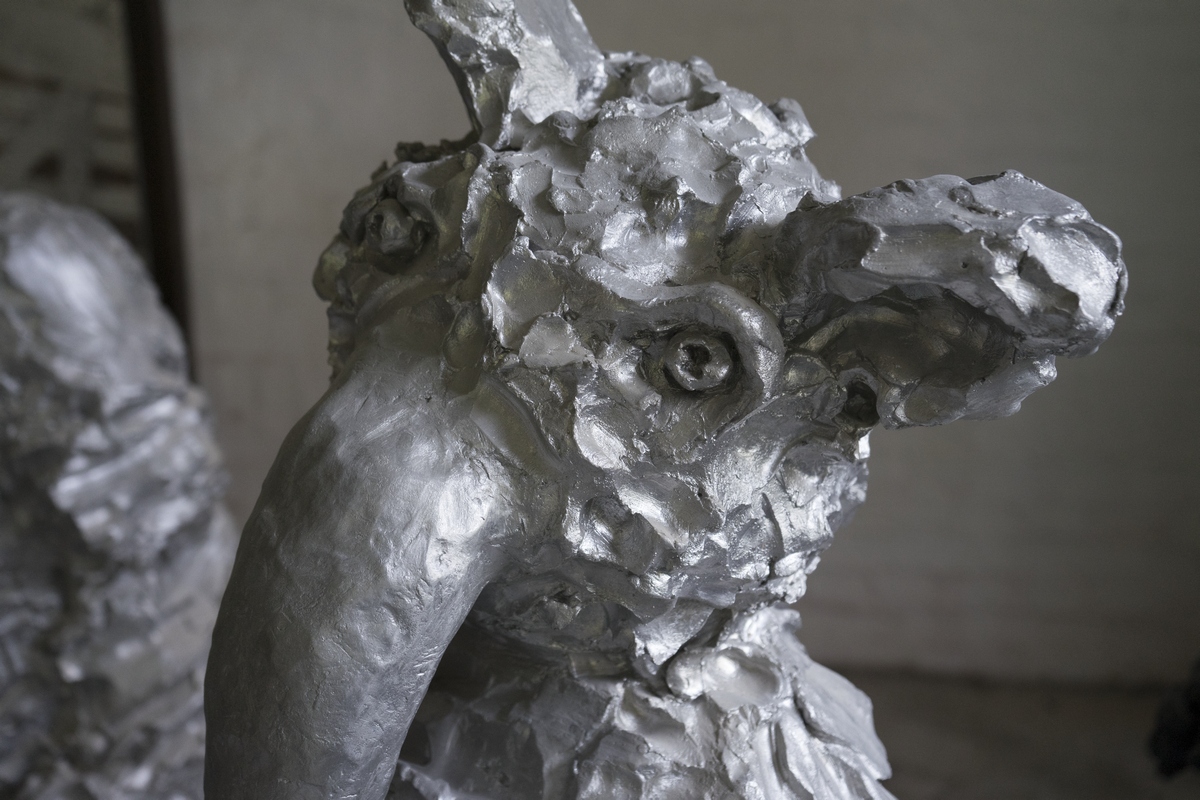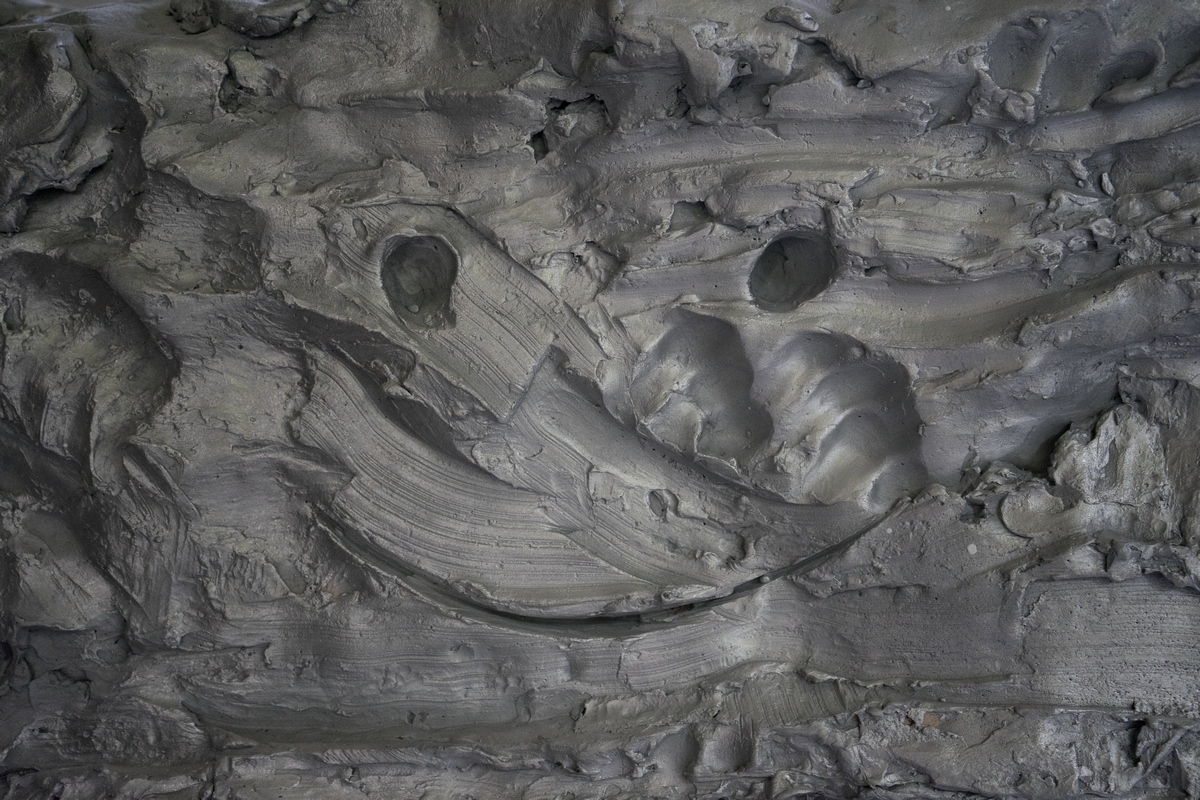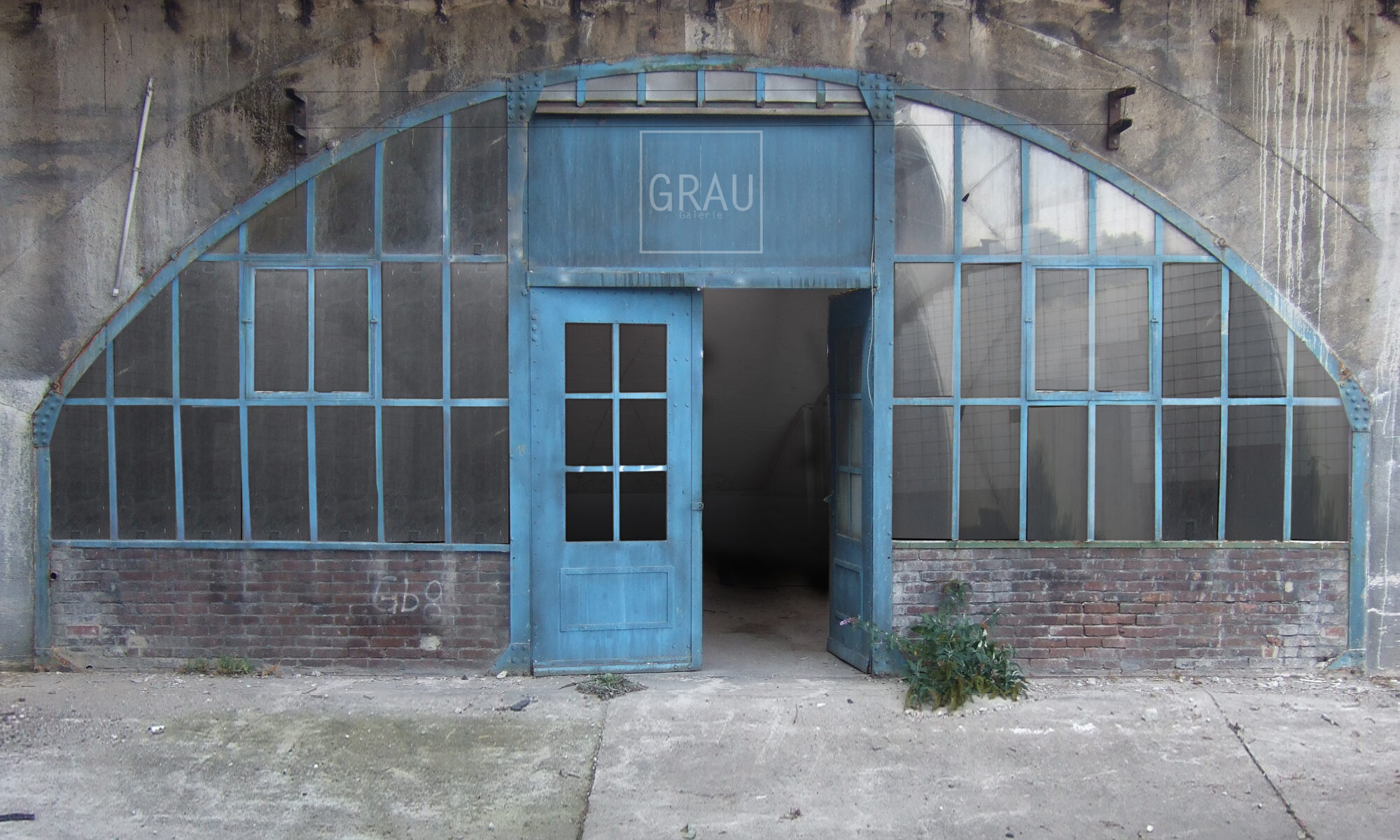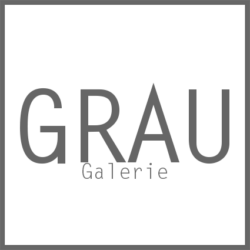6. Oktober 2024 bis 15. Dezember 2024 | Alles Grau
Carl Emanuel Wolff thematisiert in seinem Werk, das vorrangig aus Skulpturen und Installationen besteht, die Frage nach dem tatsächlichen und ideologischen Ort der zeitgenössischen Kunst. Nachdem das Kunstwerk mit dem Beginn der Moderne und dem Anspruch auf Autonomie aus dienenden Funktionen entlassen und damit auch von vermittelnden Instanzen freigesetzt zu sein scheint, wie z.B. dem Hof und der Kirche, ist zunehmend Philosophie, ästhetische Theorie und Kunstkritik zur Bestimmung und Begründung von Kunst funktionalisiert worden. Der vermeintliche Freiraum der Kunst, der sich in Form von Museen und öffentlichen Sammlungen institutionalisiert hat, ist jedoch keineswegs Spielraum eines interessenlosen Wohlgefallens, sondern entpuppt sich mehr und mehr als gettoisierte Schutzzone, in der das Kunstwerk als Exponat neutralisiert, nur noch als Ware erscheint, deren Auswahl, Präsentation und Produktion von den Gesetzen des Marktes diktiert wird. Wenn Carl Emanuel Wolff seine Arbeiten neben traditionellen Ausstellungsorten zunehmend in alltäglichen Situationen realisiert, geht es nicht darum alternative Orte für Kunst ausfindig zu machen, sondern es geht um die grundsätzliche Infragestellung von Zusammenhängen – musealen und alltäglichen – die das Kunstwerk sichtbar werden lassen, ergänzen, integrieren oder auch aufheben. Dabei bedient sich der Künstler Orte und Situationen, in der die Individualität des Angebots bzw. des Produktes einen – um in der Diktion zu bleiben – ästhetischen Mehrwert freisetzt, der dem Kunstwerk zum Verwechseln ähnlich bzw. vergleichbar ist. Die Zigarre, Produkt einer verfeinerten Rauchkultur, fungiert dabei z.B. ebenso wie der Humidor, das Billardspiel, das Märchen als künstliche bzw. Kunstform, in der Sinn und Bild zusammentreten, ohne dass Bedeutung und Interpretation die sinnliche Wahrnehmung dieses Zusammentreffens vornherein festlegen. Die Arbeiten von Carl Emanuel Wolff stellen offene Strukturen her, in denen die Bedingungen für die Wahrnehmung eines Kunstwerks in unmittelbarer Abhängigkeit von der Möglichkeit des Betrachters stehen, sich dafür zu entscheiden, sich auf das Werk als Kunst einzulassen und es in und durch Betrachtung zu vervollständigen. Dieser ursprünglich mit den Ansätzen romantischer Kunstkritik verbundene Ansatz ist umso provokanter und folgenreicher als sich die Wahrnehmung von Kunst und Werk vermehrt zu einem hermetischen Zirkelschluss verkehrt, der qua vermeintlich kompetenter Kritik enigmatisch das begründet, was widerstandslos den Gesetzen des Marktes folgt. Erscheint die vermeintlich fiktive, von Wunschfasern durchsetzte Wirklichkeit des Kunstwerks wie in den Arbeiten von Carl Emanuel Wolff inmitten der profanen Alltagswirklichkeit oder vice versa, werden künstliche Trennungen nicht nur durchsichtig, sondern auch durchlässig, indem sich die willkürlich getrennten Bereiche von Kunst und Wirklichkeit in ihr jeweiliges Gegenteil eingrenzen. Kunst wird hier in dem Maße wirklich und wirksam, wie die Wirklichkeit als eine durch Fiktionen bestimmte, ganz und gar imaginäre Konstruktion erkennbar wird.
Prof. Dr. Karin Stempel

Carl Emanuel Wolff’s sculptures and installations focus on the question of the place of the ideological and the factual in contemporary art. The modernist striving for autonomy has apparently liberated the work of art from its utilitarian function, as well as from its mediating purposes, such as those of court and Church. Since this process began, the responsibility for defining art and providing its basis of legitimating has increasingly been assumed by philosophy, aesthetic theory and criticism. However, the supposed free space of art, institutionalized by the museums and public collections, is not a space of disinterested contemplation; instead, it is becoming a kind of ghetto, a sealed-off area in which the artwork, neutralized by exhibition, is reduced to a commodity whose selection, presentation and production are entirely governed by the laws of the market. Carl Emanuel Wolff displays his works in mundane places, outside traditional exhibition contexts – not just for the sake of using alternative settings, but as a means of exploring and radically questioning the ways in which the museum, and the everyday world, allow the artwork to be seen: complementing and integrating it, or suspending its effect. The artist uses places and situations in which the individuality of the goods on display creates an aesthetic „surplus“ which appears identical to that of the artwork. The cigar, for example – the product of a sophisticated culture of smoking – serves as an artificial form or an art form in which content and image coincide, but which preserves the directness of sensuous perception, instead of imposing determinate meanings and interpretations. The same applies in the use of the fairy tale or the game of snooker. Wolff’s works establish open structures in which the conditions of perception depend directly on the willingness of viewers to engage with the work and complement it through personal involvement. This approach, whose origins lie in Romantic art criticism, is rendered all the more provocative and significant by the prevalent tendency to invert the perception of art and the work, placing it within a hermetic circle that provides enigmatic critical justifications for art which is in fact wholly subordinate to the logic of the market. The seemingly fictitious reality of the art work is shot through with strands of desire. Where it impinges on the reality of everyday life, or vice versa, the artificial divisions become transparent and permeable; in the work of Carl Emanuel Wolff, therefore, the arbitrary demarcations between art and life are dissolved and exactly inverted. Here, art becomes real and effective, to the extent that reality is recognized as an imaginary construction, entirely ruled by fictions.
Prof. Dr. Karin Stempel


